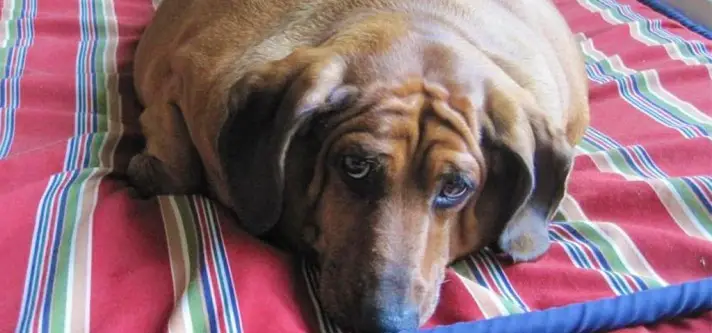There are more and more stories in the media about the increasing rate of obesity in Australian people, and what it is doing to their health. Unfortunately, the obesity epidemic is also affecting our dogs. According to the Australian Veterinary Association, over 40% of our dogs are overweight, and they share similar medical problems that obese people have to contend with.
How it happens
There are several contributing factors which may make your dog overweight. An underactive thyroid gland can slow down their metabolism and encourage weight gain. When dog are desexed their metabolic rate can become slower, which means they doesn’t use up calories as effectively as before their operation. However, 95% of obese dogs are in this condition because they eat more calories than they burn up during the course of their day.
It can be difficult to resist those soft pleading eyes, and it is tempting to give your dog extra treats, table scraps and other high calorie snacks to show them how much you love them. Unfortunately when you give in you are killing your dog with kindness…
One of the most significant effects that obesity can have on your dog’s body is increased wear and tear on their joints, which results in painful osteoarthritis. Overweight dogs can also develop high blood pressure, heart disease, skin fold infections and diabetes. They also have a shorter lifespan. A 2009 study involving 48 Labrador Retrievers suggested that dogs that had their food intake restricted and were deliberately kept lean could live up to 2 years longer than their overweight counterparts.
Dealing with overweight dogs
As a dog owner, you need to be honest with yourself about your canine companion’s body condition. Is it easy to feel your dog’s ribs? Does it have a tucked up tummy and a narrow waistline? If not, you need to do something about it. Now is the time to change your dog’s lifestyle and help it to trim down.
The first port of call is a visit to the veterinarian to make sure there aren’t any underlying health issues which are contributing to your dog’s generous waistline. If all is normal, it’s time to start a diet.
The most important part of treating obese dogs is reducing their calorie intake. Because dogs only eat what we give them, it should be easy for dogs to lose weight; we just need to feed them less. Right?
Wrong. It is hard work getting those extra kilos off your dog. It takes willpower to resist their demands for treats. People also have their own food issues which are often projected onto their dogs. It’s interesting to note that a 2010 study from the Netherlands found that dogs are more likely to be obese if their owners are also overweight.
3 ways to shake the weight
To reduce your dog’s waistline, you need to do three things:
- Change your dog’s food to one with a lower fat content, and put less food in the dinner bowl.
- Cut out the between-meal snacks. You can use low calorie snacks such as diced steamed carrot or green peas when you want to treat your dog.
- Increase your dog’s exercise to use up more calories. Keep in mind that it’s not easy for an overweight dog to walk or run for long. Non-weight bearing exercise such as swimming is much gentler on sore joints.
The cost of obesity in our canine companions is high, but if you have willpower, and provide the right diet and regular exercise, you can help them lose weight. What are you waiting for?

